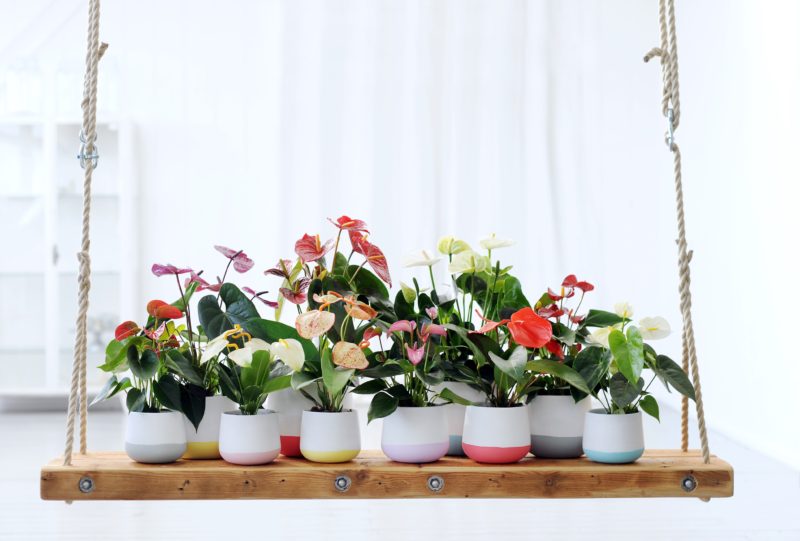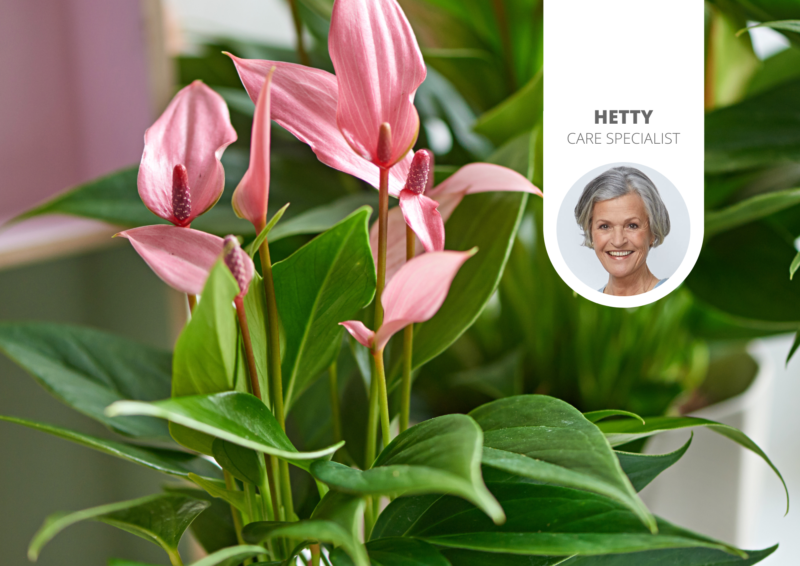What to do when an Anthurium is attacked by disease or pests
The Anthurium is not that vulnerable to diseases but it can be subject to root rot or can become infested with aphids or scale insects. Here are some tips for the best measures to take in these cases:
Root rot
Anthuriums can be infected with root rot that can be identified by roots that turn brown and rot, and by stems and leaves that turn yellow or brown. If you see this, take the Anthurium out of its pot, remove the rotten parts, and put the healthy pieces into new well-draining potting compost. This link tells you more about Anthurium potting compost.
Root rot develops due to stagnating water; this probably indicates improper watering. To avoid this, don’t give the plant any water until its potting compost is practically dry, and use only special, well-draining potting compost.
Aphids and scale insects
The Anthurium can be a host to aphids and scale insects. They can be spotted by seeing the insects themselves or the brown or yellow spots on the leaves of the plant. Aphids are easy to remove by spraying them off with cold water from a plant spray. Scale insects are somewhat more difficult to get rid of and will require an organic pesticide. Use this as directed by the instructions on the packaging, check the plant regularly, and treat again if needed. Scale insects dislike moisture so you can prevent them from becoming established by spraying the Anthurium frequently.
You can read more about caring for your Anthuriums here.



